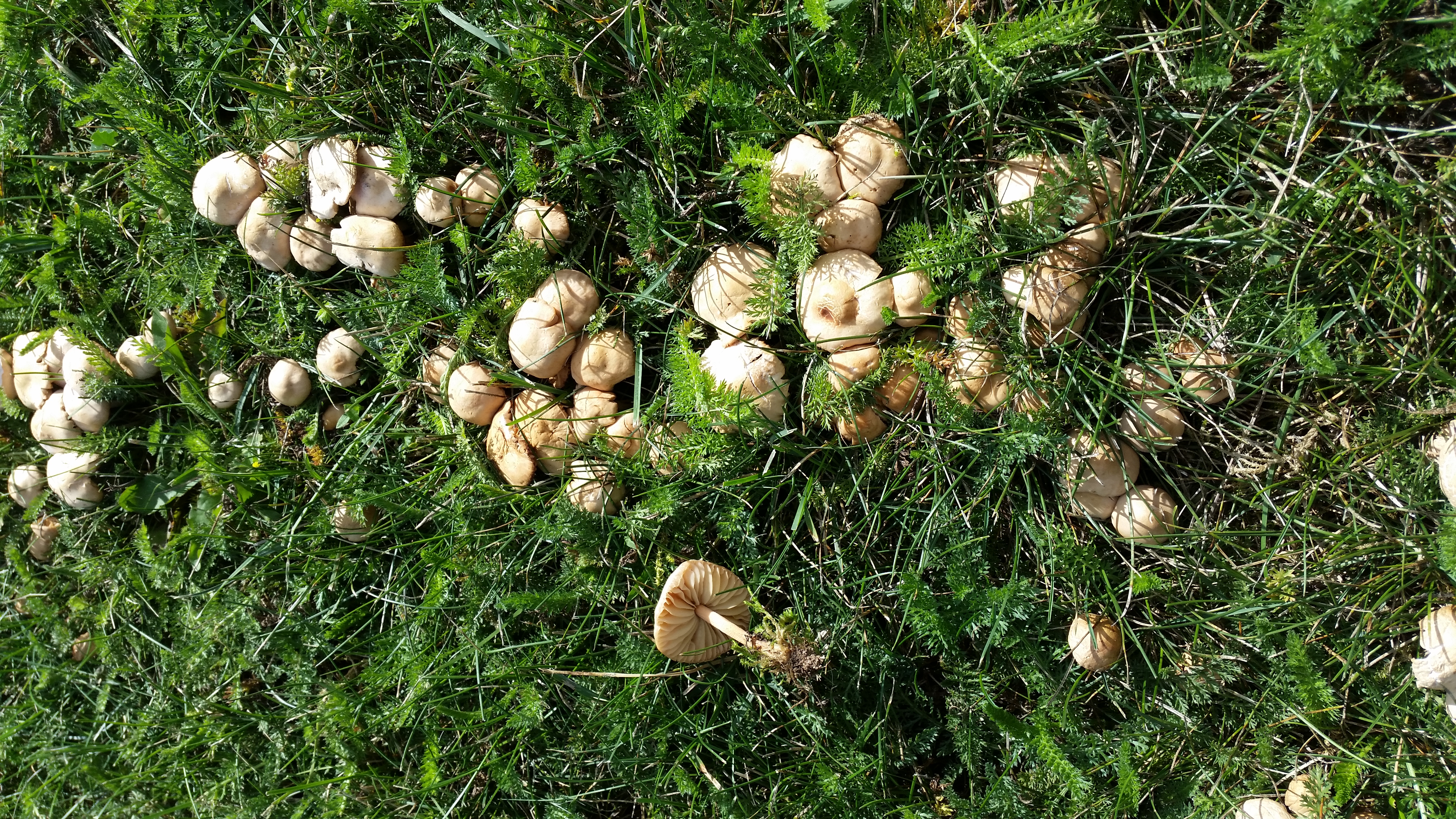Rise and fate of genetic variation
In this project, we use fairy rings of the basidiomycete Marasmius oreades to investigate the rise and fate of new genetic variation in the fungal life cycle. Fairy rings are caused by a fungal mycelium growing beneath the soil surface in a circular pattern. They are useful because it is easy to determine where a fungal individual starts and ends. By comparing the genome sequences of different fruiting bodies of a fairy ring, new mutations can be identified. We trace how mutations are distributed spatially, in large scale across the ring, and small scale within different fruiting body tissues, as well as temporally over the years.
The project deals with fundamental evolutionary questions such as how genetic variation is introduced into individuals and populations. In addition, we aim to answer more general questions about basidiomycete biology, such as the moment of germline definition, the prevalence of monokaryons and dikaryons in nature, among other things.
As a related project, we are zooming in on the genus Marasmius, with the aim to sequence a collection of new genomes, build a phylogeny of the genus, and explore mating system evolution.
Group members involved in the Marasmius project: Boel Olsson, Markus Hiltunen Thorén, Xi-Hui Du
